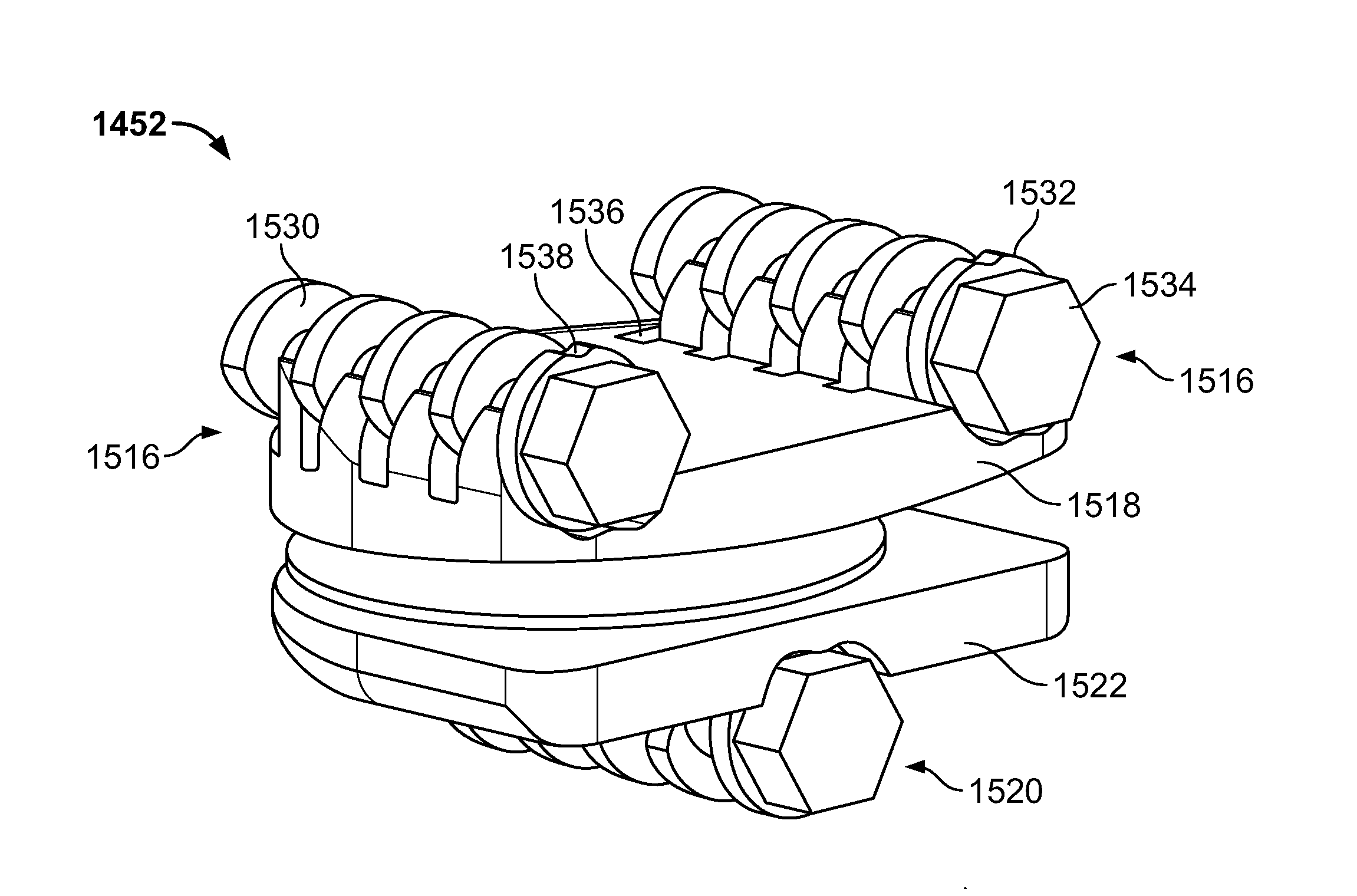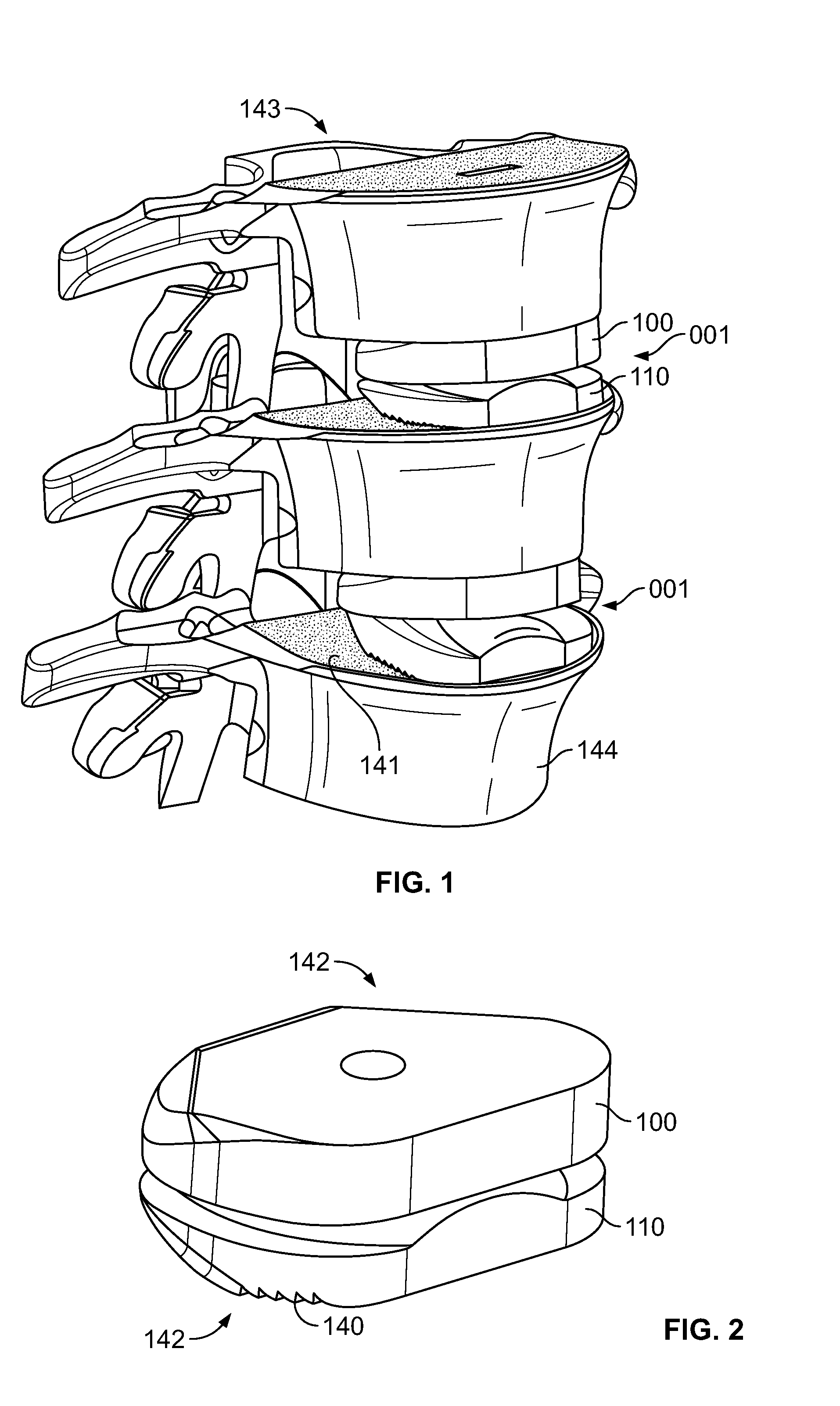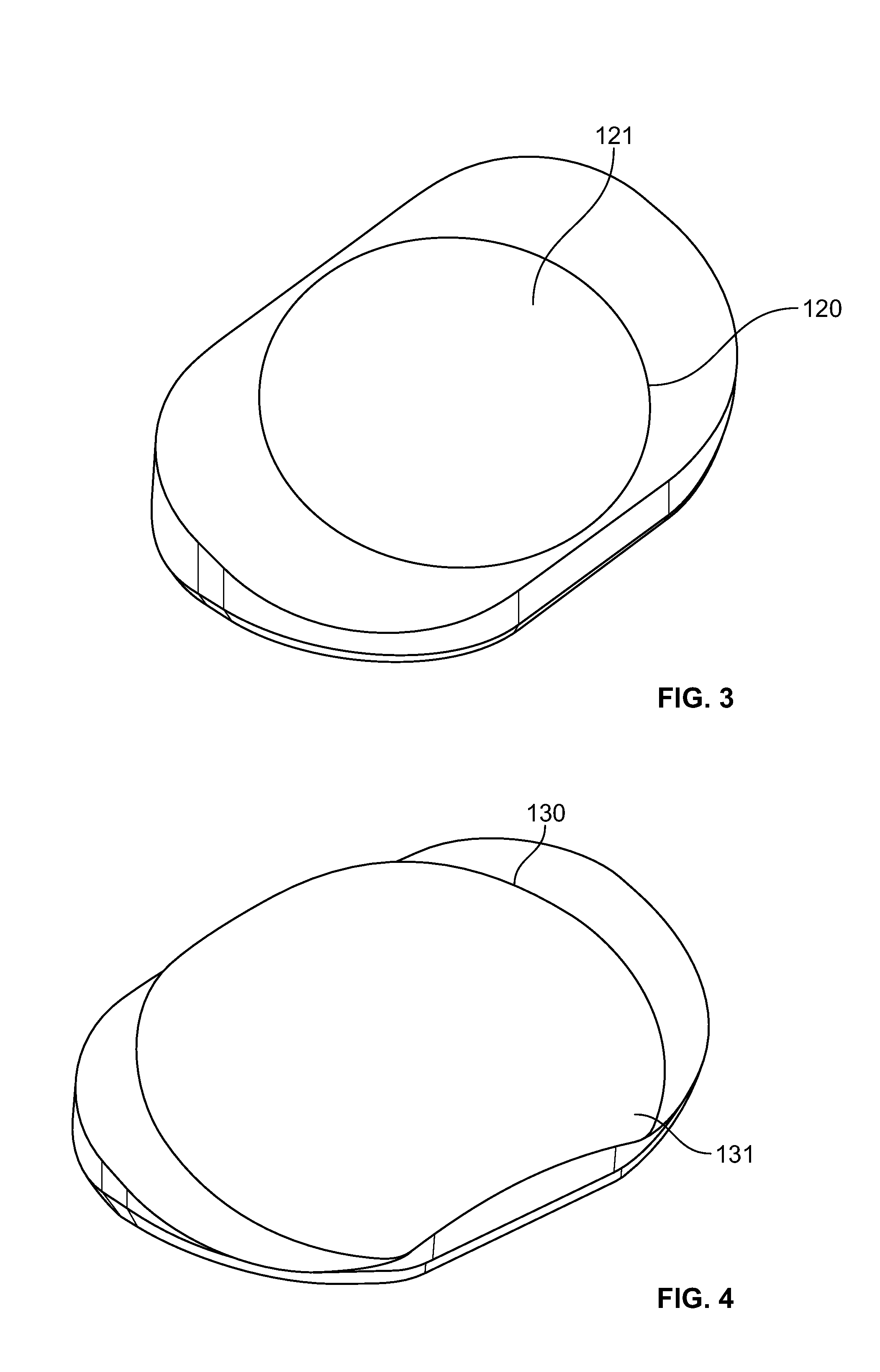System and method for sizing, inserting and securing artificial disc in intervertebral space
a technology of intervertebral space and artificial disc, which is applied in the field of system and method for sizing, inserting and securing artificial discs in intervertebral space, can solve the problems of limited mobility, common joint degeneration, and limited success of conservative treatments, and achieves exceptional mechanical performance and biocompatibility characteristics
- Summary
- Abstract
- Description
- Claims
- Application Information
AI Technical Summary
Benefits of technology
Problems solved by technology
Method used
Image
Examples
Embodiment Construction
[0140]In a preferred embodiment, such as illustrated in FIGS. 1-4, an artificial disc device 001 comprises an upper shell 100 and lower shell 110. The upper shell 100 comprises a substantially concave recess portion 120, and the lower shell 110 comprises a substantially convex portion 130. Although not preferred, the concave and convex portions may be switched such that the upper shell 100 may alternatively comprise the convex portion 130.
[0141]The convex portion 130 comprises a convex articulation surface 131, and the concave portion 120 comprises a concave articulation surface 121. It is preferred that the articulation surfaces 121 and 131 have substantially matching geometries or radiuses of curvature although some mismatch of curvature may be desired to provide a combination of rolling and sliding motion to occur between the articulation surfaces 120 and 121. The geometries may be complex in nature but preferably are ball and socket style. The convex portion 130 and concave port...
PUM
| Property | Measurement | Unit |
|---|---|---|
| angle | aaaaa | aaaaa |
| friction | aaaaa | aaaaa |
| resistance | aaaaa | aaaaa |
Abstract
Description
Claims
Application Information
 Login to View More
Login to View More - R&D
- Intellectual Property
- Life Sciences
- Materials
- Tech Scout
- Unparalleled Data Quality
- Higher Quality Content
- 60% Fewer Hallucinations
Browse by: Latest US Patents, China's latest patents, Technical Efficacy Thesaurus, Application Domain, Technology Topic, Popular Technical Reports.
© 2025 PatSnap. All rights reserved.Legal|Privacy policy|Modern Slavery Act Transparency Statement|Sitemap|About US| Contact US: help@patsnap.com



